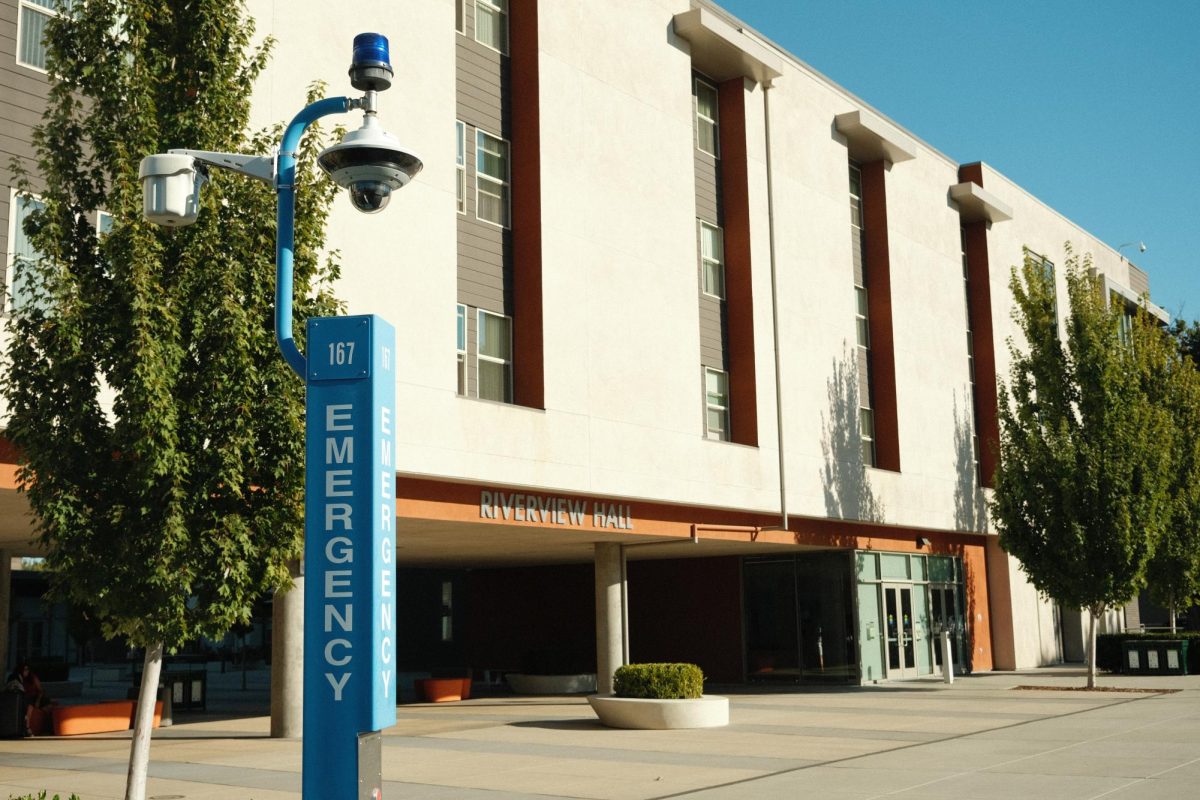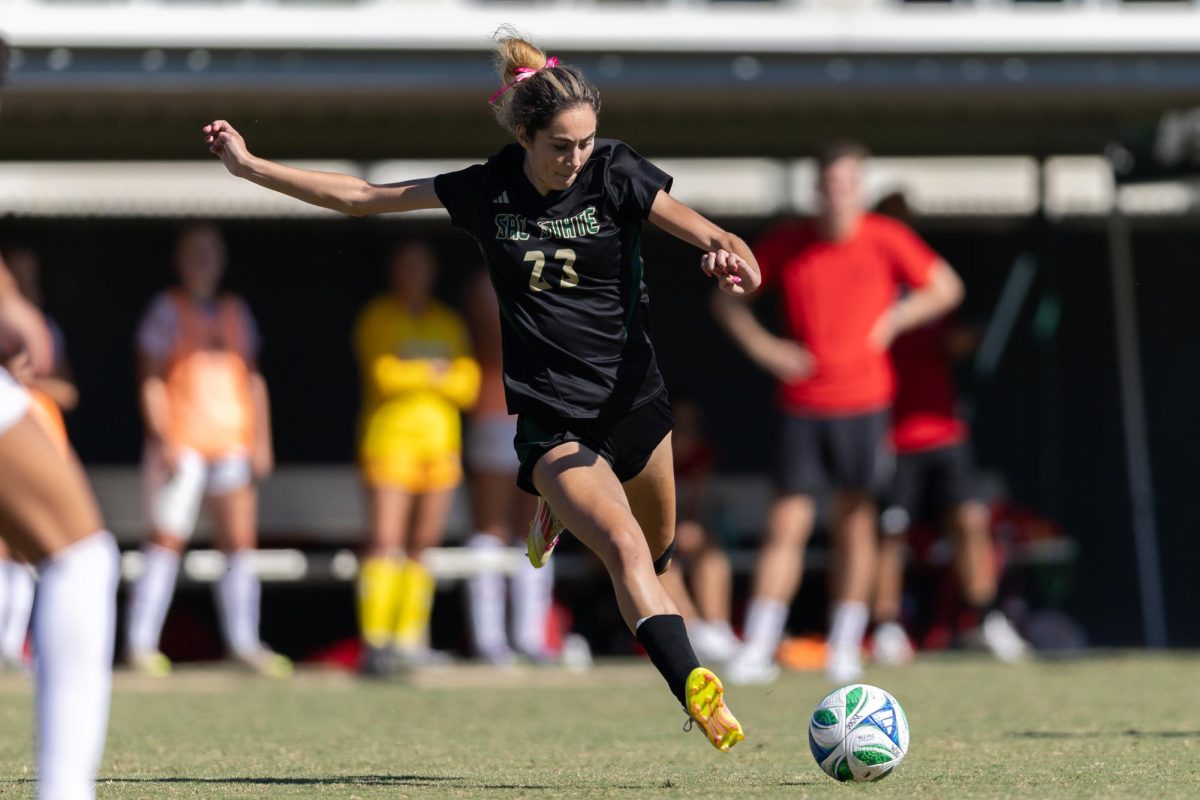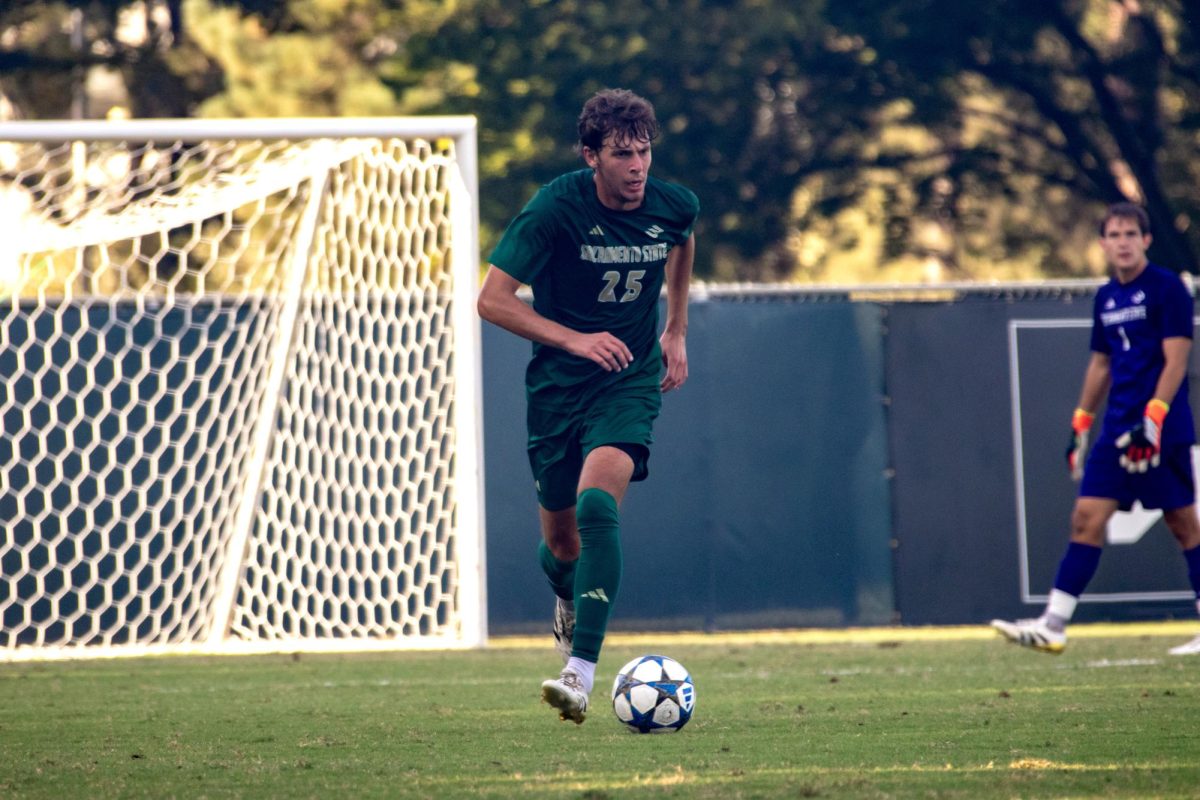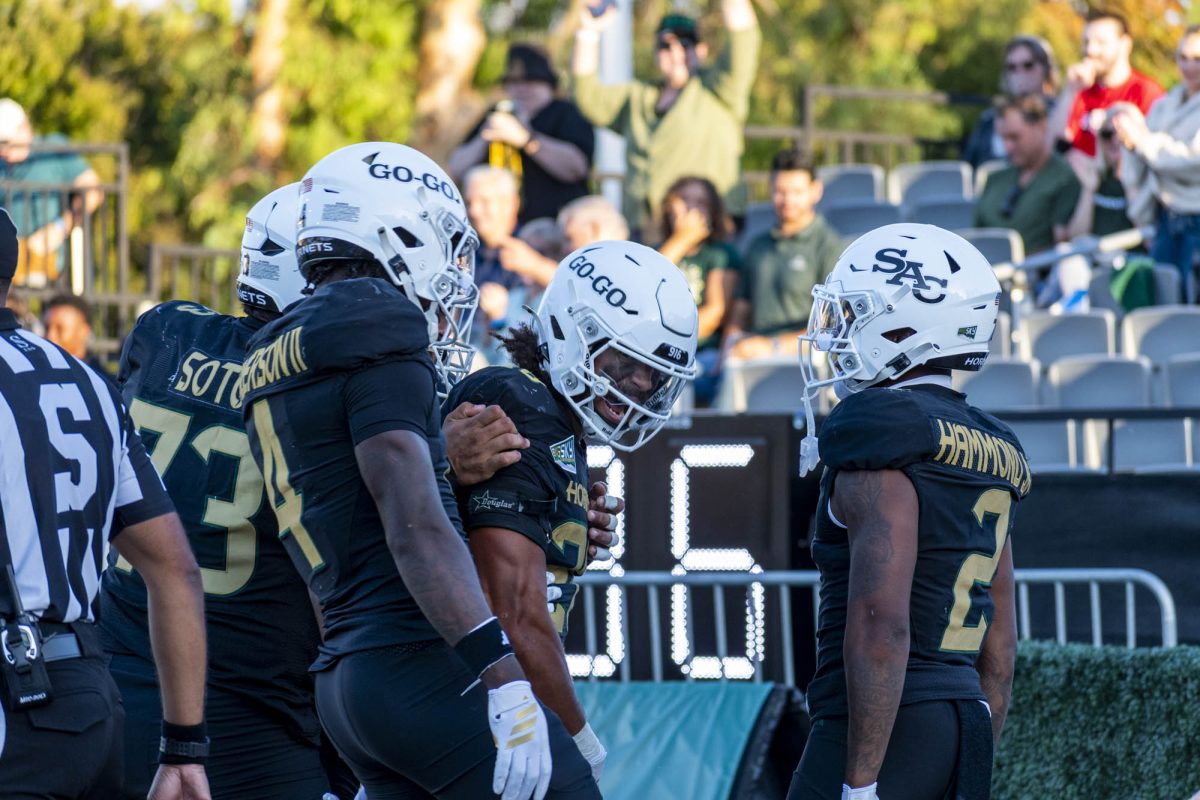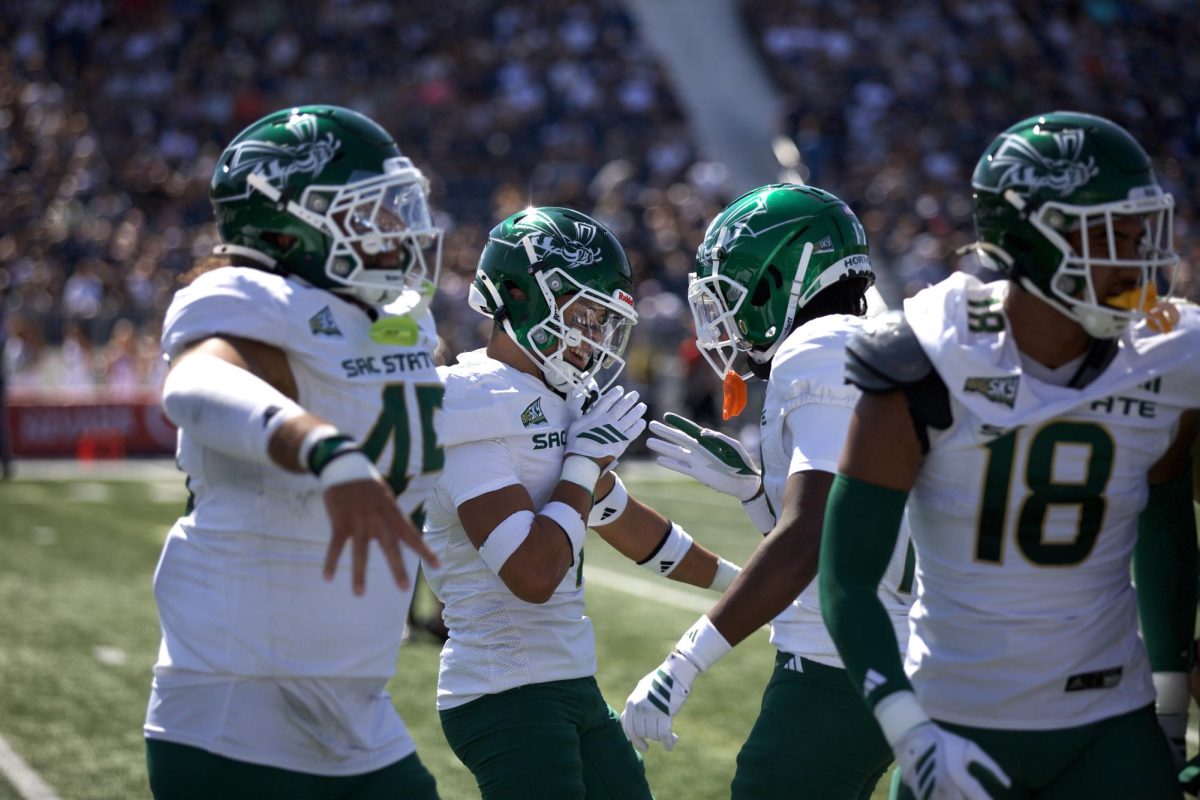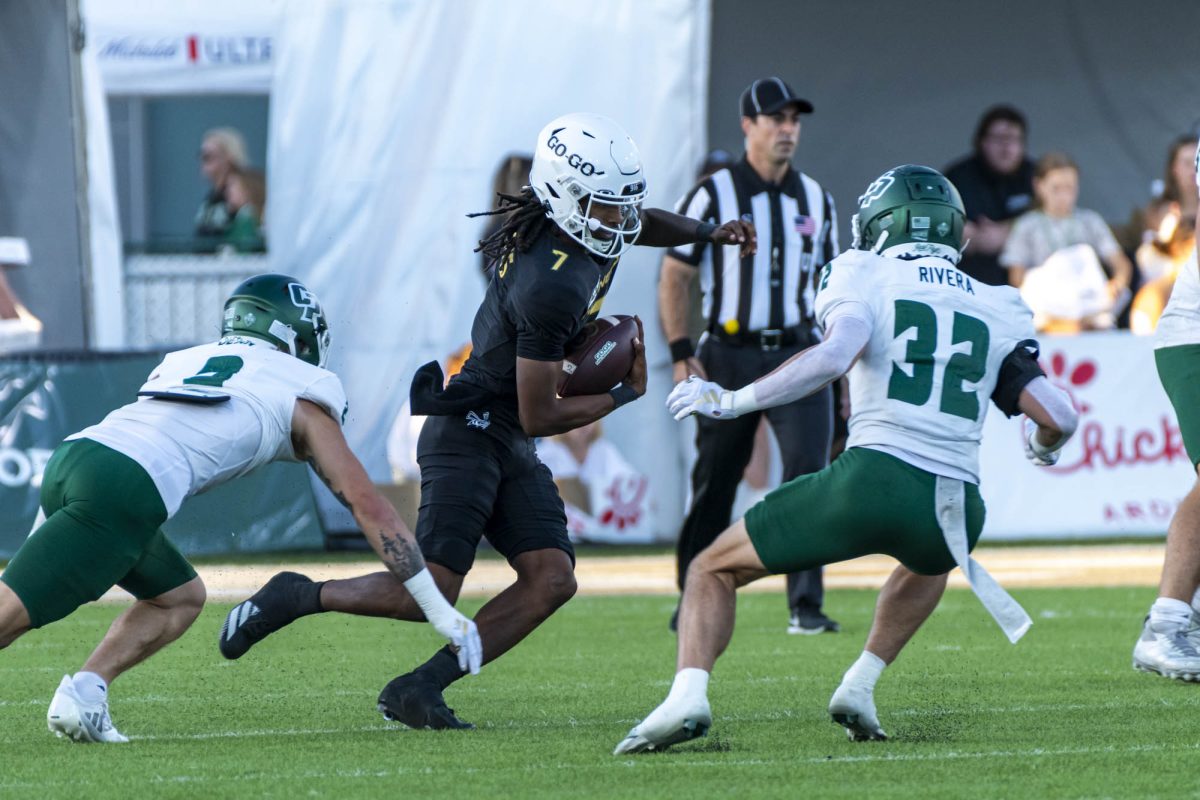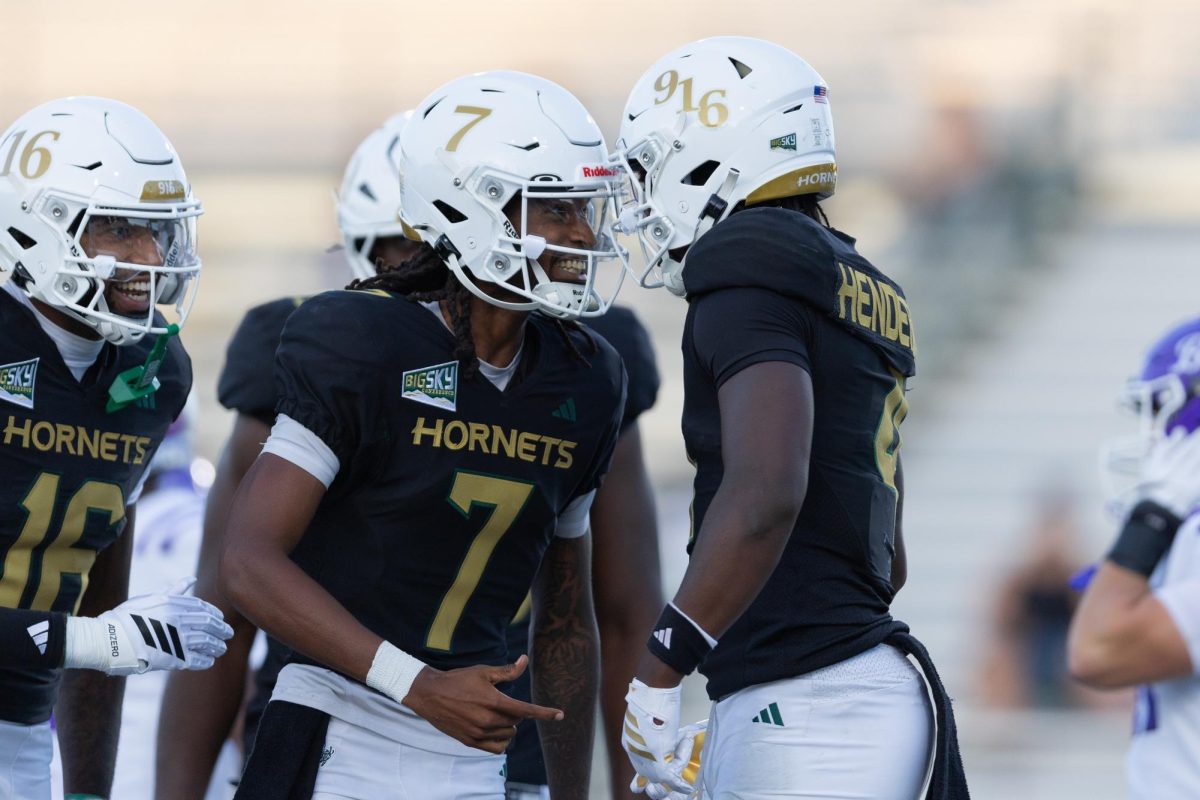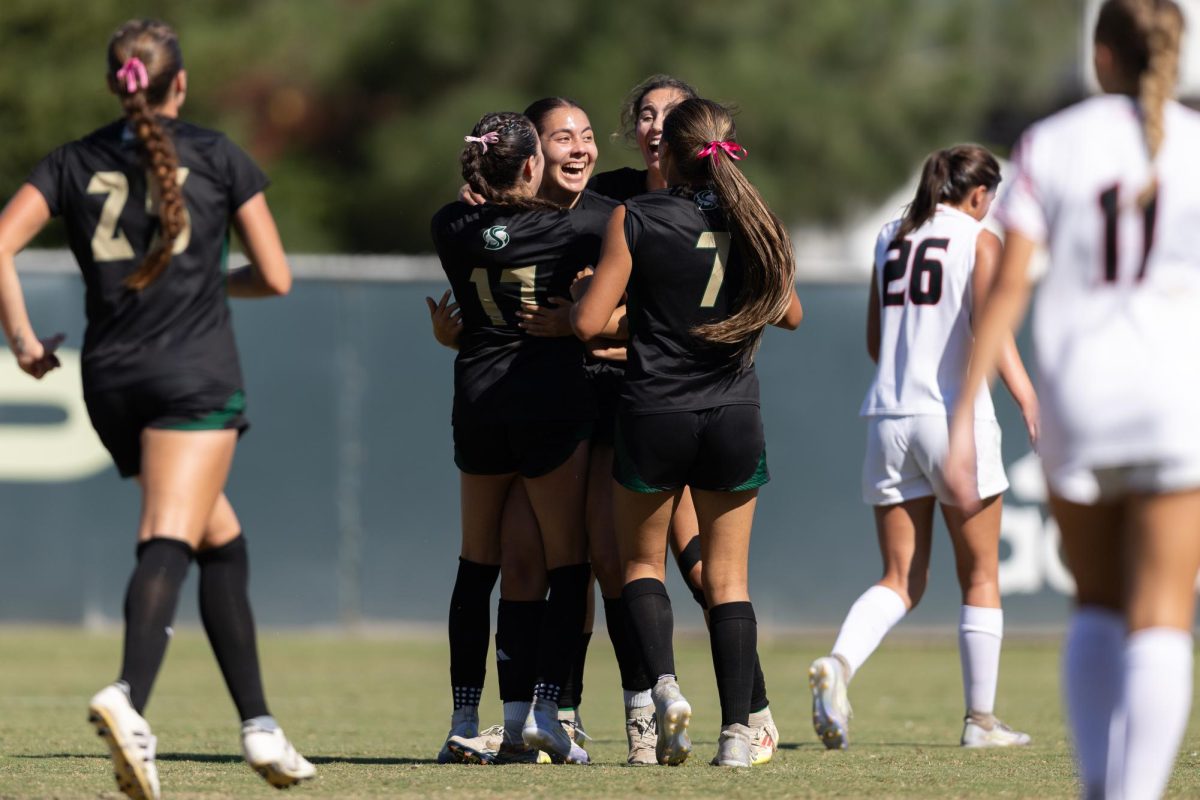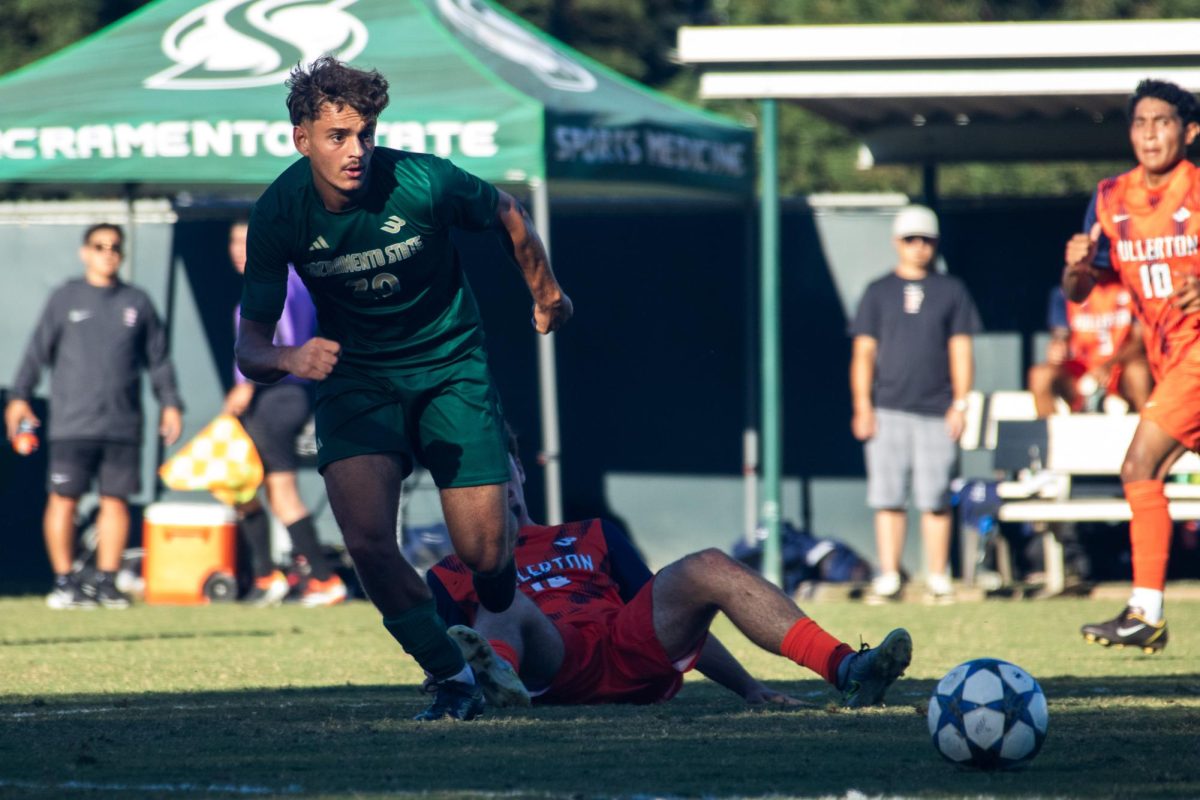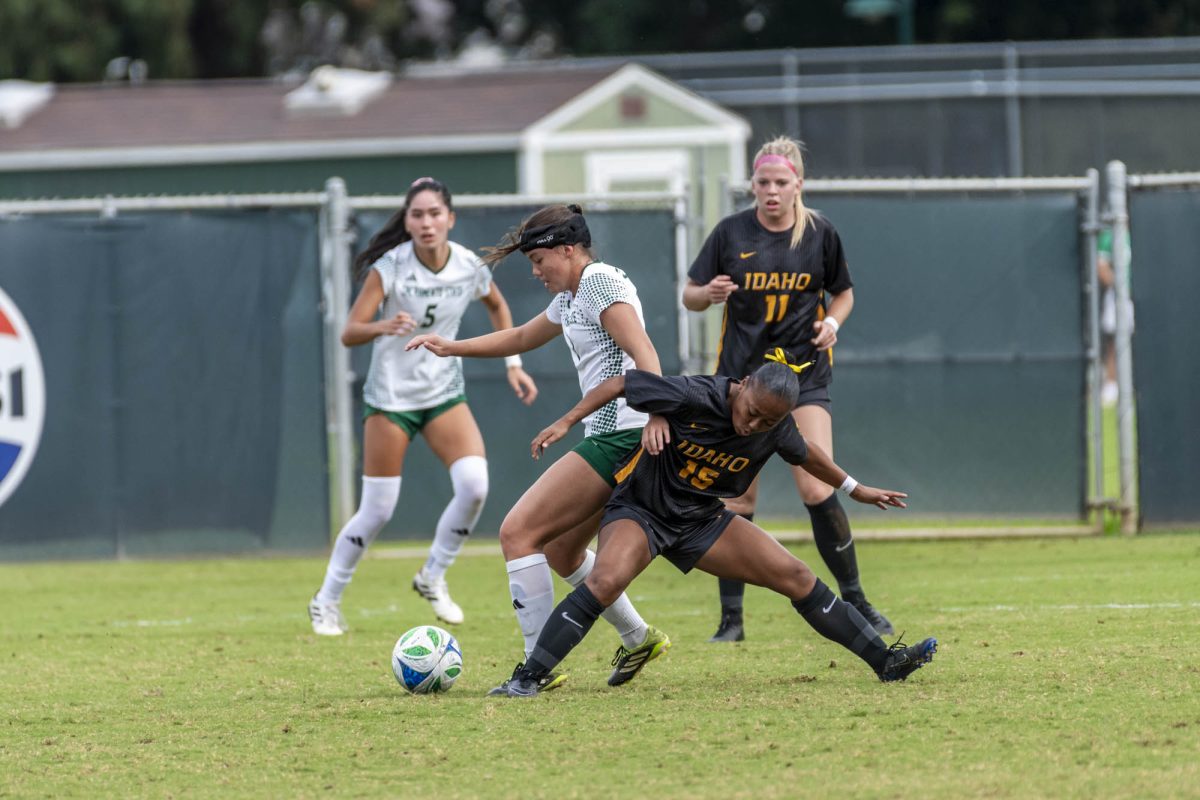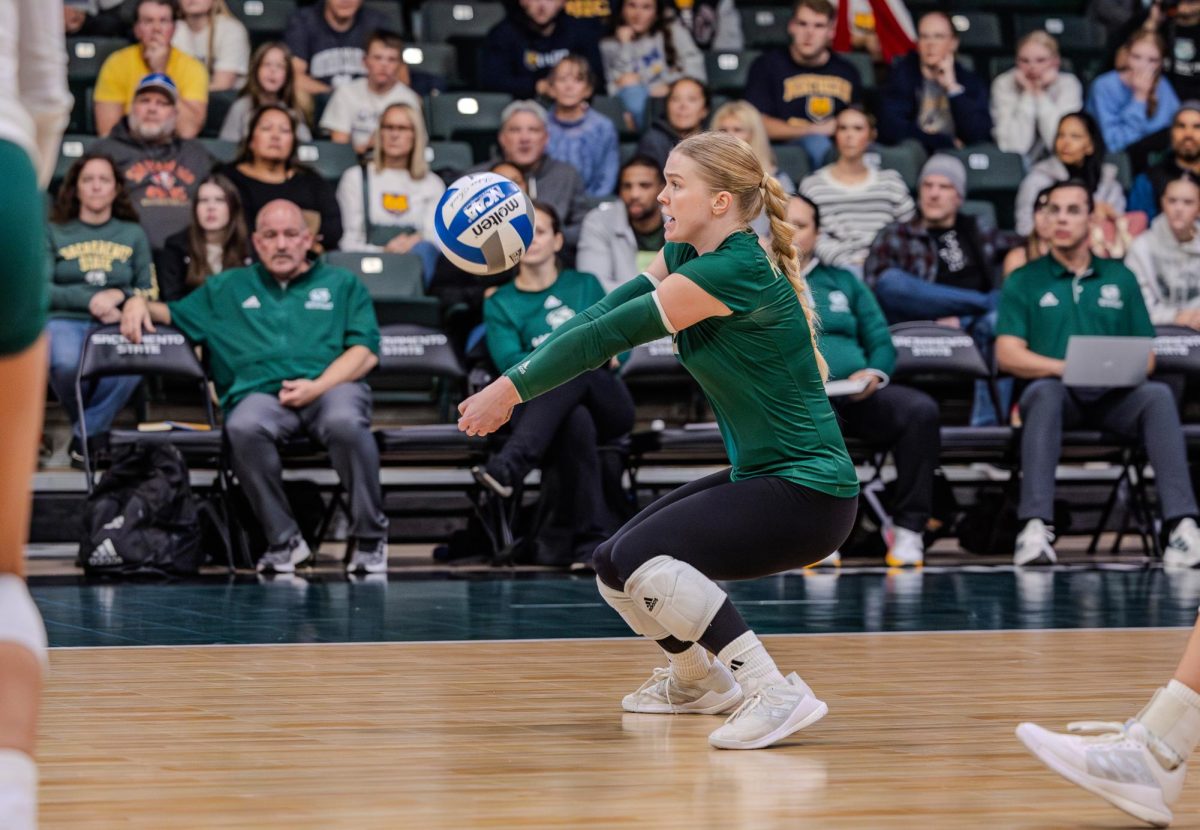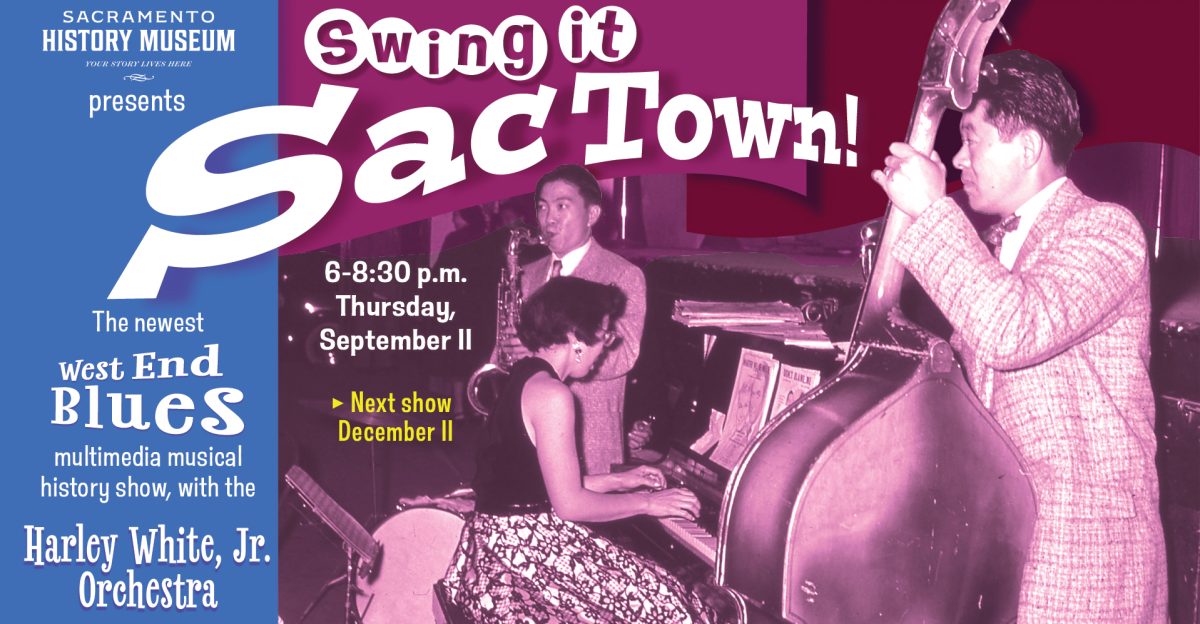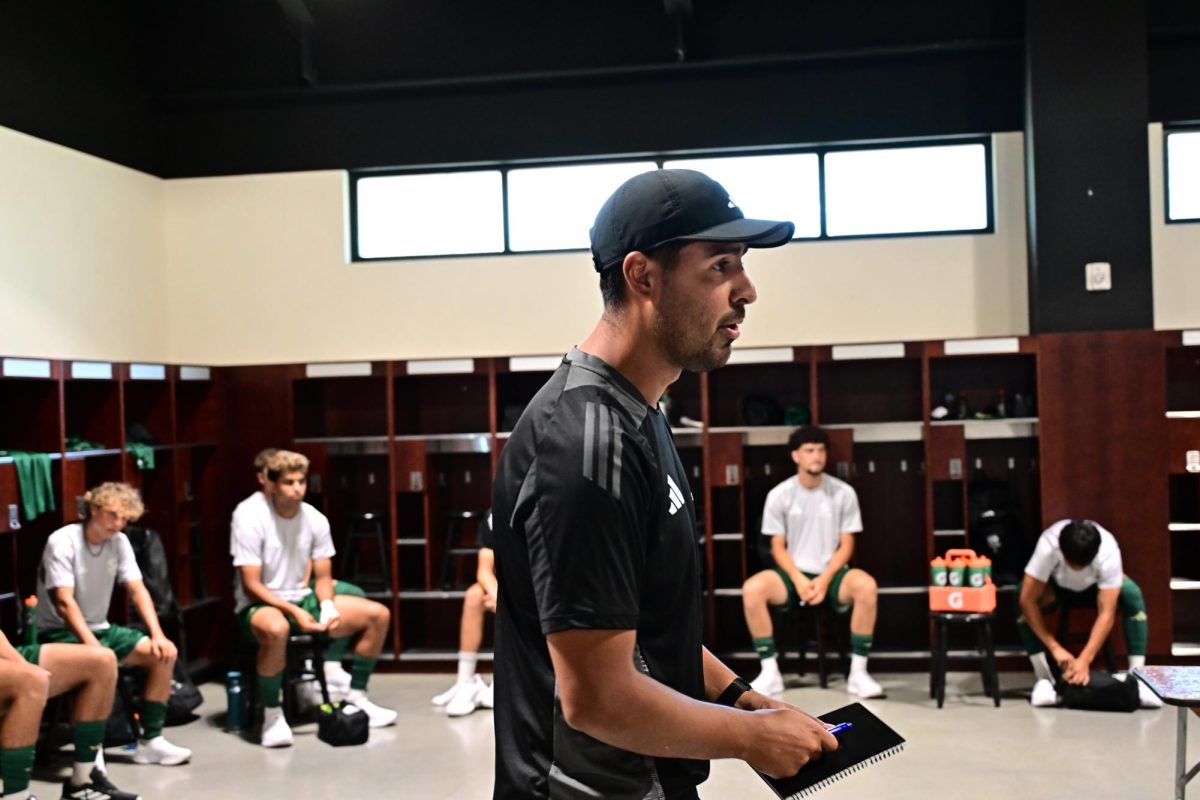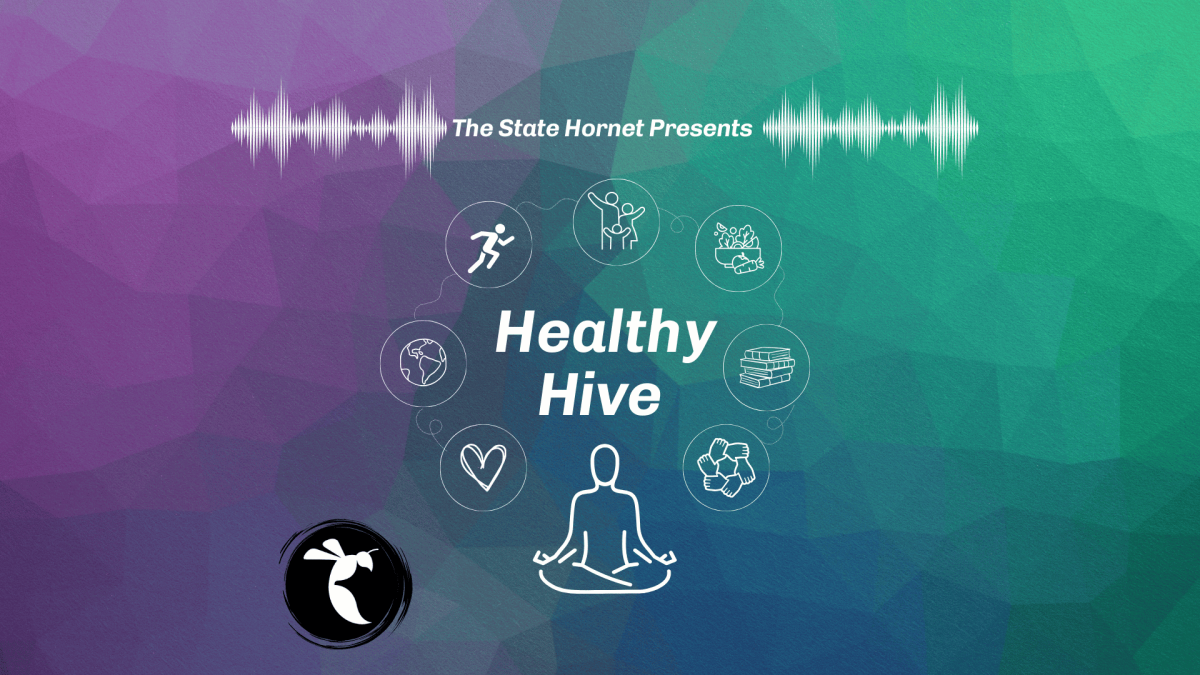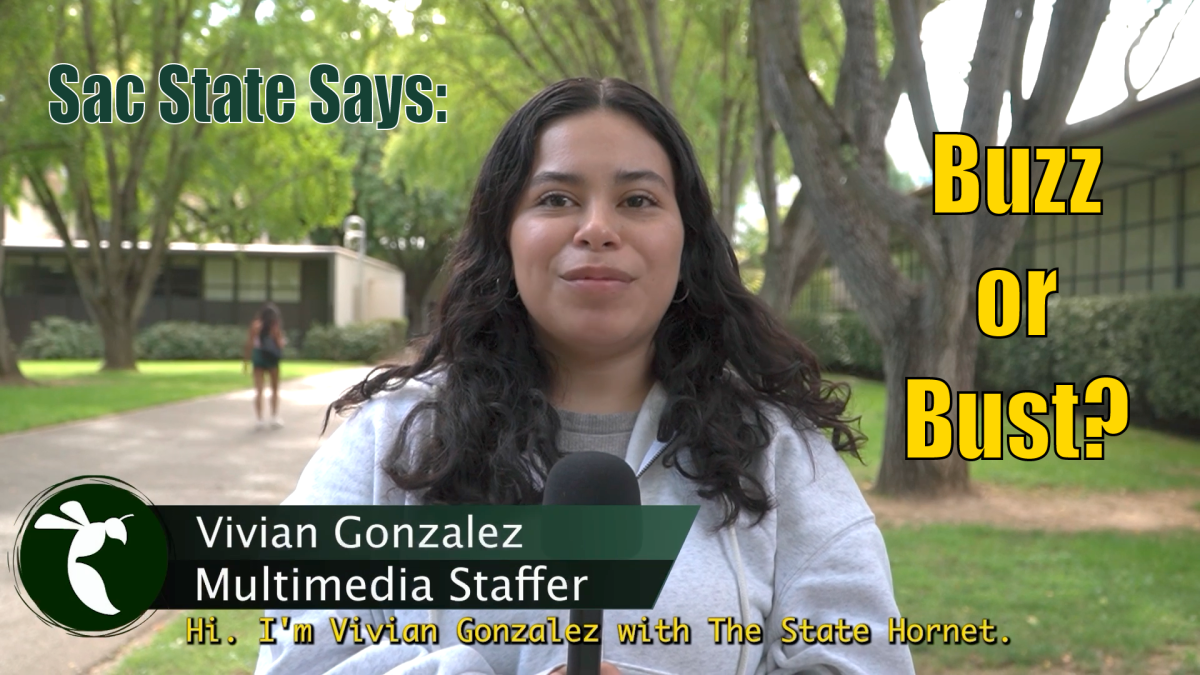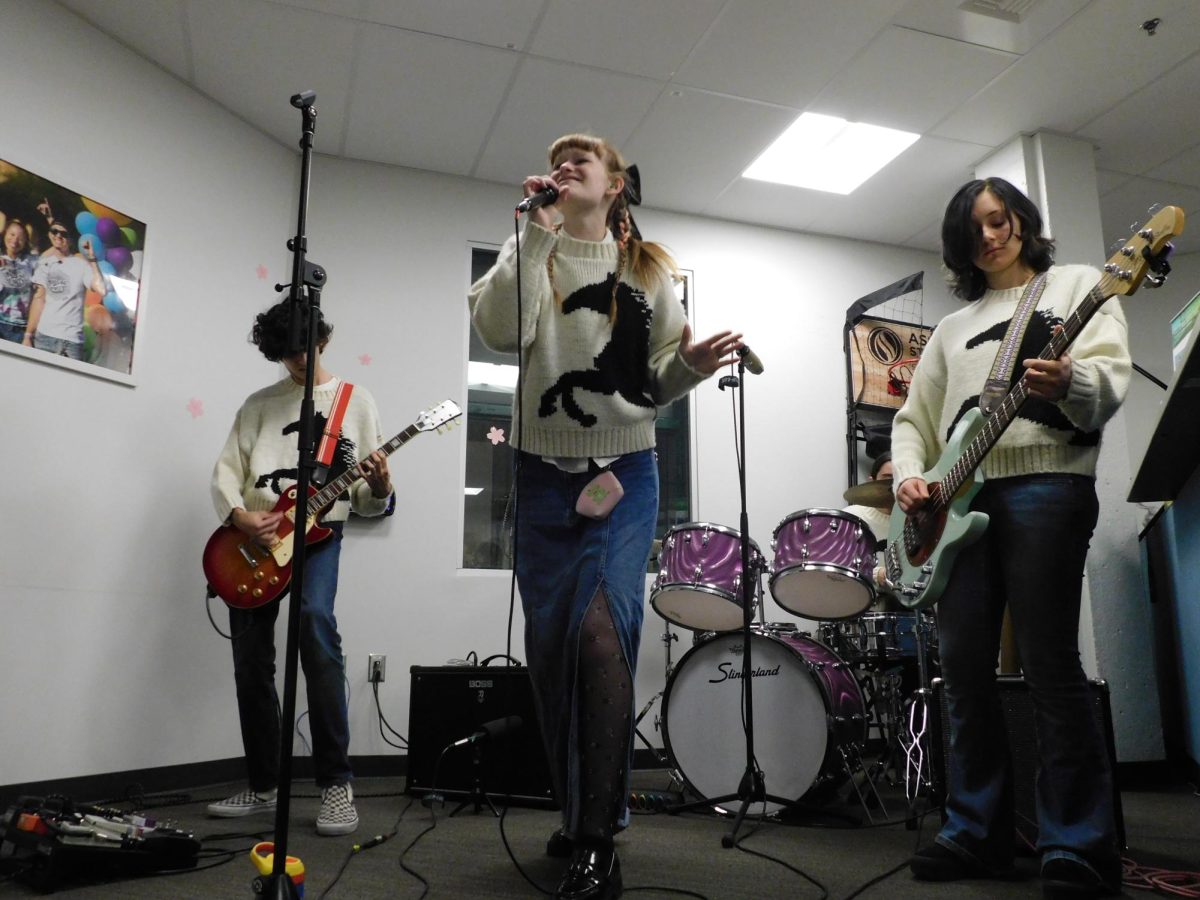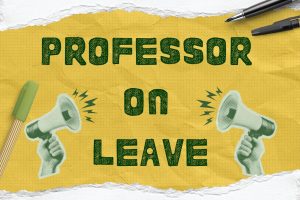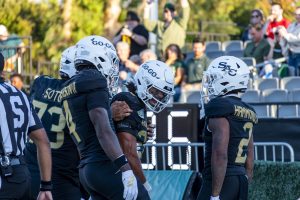Hawks swoop down on chickens
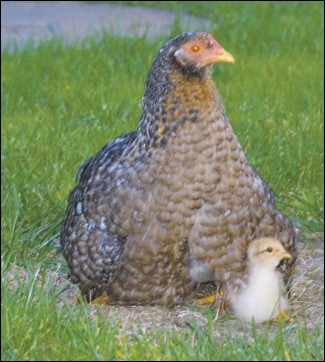
Image: Hawks swoop down on chickens:A mother hen watches over her young chick to protect it from the dangers of the hawks that swoop down, pick them off and make a quick meals out of them.Photo by Whitney Deatherage/State Hornet :
April 2, 2003
It is not unusual to hear the constant clucking of chickens around Sacramento State.
All who attend the university know their sounds and presence. Now that spring is underway, large numbers of baby chickens can be seen scurrying around the campus.
This is the point in every chicken?s life when disaster strikes, for baby chicks serve as meals to hawks flying overhead.
“It?s perfectly natural,” said biology professor Ron Coleman. One of the classes he teaches is ethology, an upper-division biology class in which the behavior of animals is studied.
Coleman said it is a regular occurrence to see hawks prey on baby chickens and has personally seen it happen many times.
“They (chickens) need a slightly secluded spot behind a bush where they can make a nest,” Coleman said. Placer Hall is one spot the chickens call home.
Chickens, along with other animals, procreate to make a large number of young, Coleman said. This is to ensure that at least two will survive.
Coleman described the chicken population at Sac State to be “roughly stable.”
Regarding the food chain, hawks are obviously above the chickens. Thus, chickens are a source of food for them, Coleman said.
“It keeps the number of chickens at a reasonable number,” Coleman said. Although this is not a goal for the hawks, population control is a net effect, he said.
Coleman said he uses chickens in his behavior class.
“They are very careful about what they eat,” Coleman said. If given the choice between two different foods, they can distinguish which one they like more.
The male chicken will allow the female to eat first while in the courtship stage, he said.
When chickens are seen scratching at the ground, it is not without purpose. Coleman said it is to stir up food for their offspring.
There are some very handsome females and males on campus, he said. “People should just enjoy watching them,” Coleman said.
Click here to send private feedback about this article to the State Hornet’s News staff.










